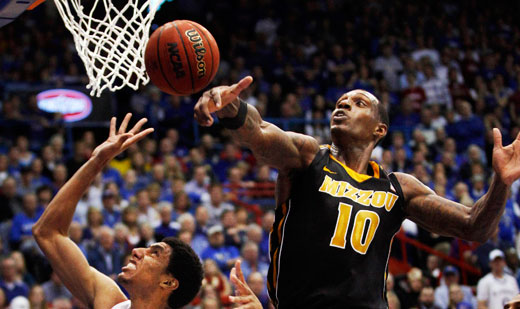
The landscape of collegiate athletics is changing, and nearly every school that participates in one of the six major conferences is being affected. Prestigious universities with great traditions are pulling out of leagues that they have been a part of for years, and are settling into new conference homes, where they will play against teams that they normally would have only had a chance to matchup with during the postseason. Of all the conferences that have made moves in the last several years, none have been as affected as the Big East.
The Big East Conference, founded in 1979, has been one of the premier basketball leagues in the country since its inception (in fact, has been widely considered to be the top roundball league in the country for the last several years). It’s easy to understand why, considering the makeup of the conference: many of its best teams are basketball-first programs that do not even field teams for the NCAA’s Football Bowl Subdivision, which is the other major collegiate sport.
Georgetown University, Villanova University, and Marquette University are a few of the schools that fall into this category. This odd configuration of football playing and non-football schools is largely responsible for the Big East’s prowess on the hardwood. The conference has also added multiple top-tier basketball programs even in the last decade, such as the University of Louisville and the University of Cincinnati, but it has also lost some of its best football playing schools, such as Virginia Tech and the University of Miami.
Due to its more widespread popularity, collegiate football brings in larger profits than collegiate basketball for Division I schools. The possibility even more obtaining football-money, a large portion of which comes from lucrative television contracts, has been the driving force behind many of the changes that have been happening across college sports, and it is also why the Big East has been hurt more than the other major conferences by these changes.
With its basketball-first setup and its less-than-stellar performance on the gridiron in recent years, the conference arguably had more to lose than any other when teams began switching their affiliations. It certainly hasn’t made it out of the conference realignment saga unscathed:
Just this year, West Virginia University, Syracuse University, and the University of Pittsburgh have opted to leave the conference for greener pastures in the Big 12 (WVU) and the ACC (‘Cuse and Pitt). Also, Texas Christian University, which was poised to join the conference next year, decided to join the Big 12 conference instead.
Arguably, one may find these conference realignment developments to be unnecessary and ultimately bad for both sports. Rivalries that have been going on for decades are being broken up, and the regional match-ups and recruiting battles that fans have been following for years will no longer be happening either. Plus, it isn’t only the Big East that is being negatively affected.
While watching Kansas and Missouri (two Big 12 Conference teams) play twice in basketball this season, I was newly disappointed each time the commentators brought up the fact that these two games would most like be the final two between the heated rivals, with Missouri leaving for the Southeastern Conference next year. Both games were instant classics (possibly because each team wanted those final bragging rights), but watching those down-to-the-wire finishes with the knowledge that they were the last go-around for two programs that have been playing each other every year for nearly a century was a bittersweet experience.
For many, this is the primary reason why they could disagree with the changes that are happening across the country. College sports are all about big rivalries. These are the games that make every season memorable, the games that the fans get more excited for than any other on the schedule, and the games that draw the most viewers. Why would anyone want to end the Kansas-Missouri Border War games, or any other rivalry like it? Other huge yearly matchups, such as the one between Texas A&M University (who is also leaving the Big 12 for the Southeastern Conference) and the University of Texas, are also going away for good.
Once again, the never-ending struggle for more profits has caused yet another important part if the sports world to sell its soul. Many believe that once the realignment process finally ends, college sports will never be the same, for better or worse.
I, for one, think that it will be the latter.
Photo: Missouri forward Ricardo Ratliffe blocks a shot by Kansas forward Kevin Young during the NCAA college basketball game in Lawrence, Kan., Feb. 25. Orlin Wagner/AP

MOST POPULAR TODAY

High Court essentially bans demonstrations, freedom of assembly in Deep South

U.S. imperialism’s ‘ironclad’ support for Israel increases fascist danger at home

Zionist organizations leading campaign to stop ceasefire resolutions in D.C. area

UN warns that Israel is still blocking humanitarian aid to Gaza

Resource wars rage in eastern Congo, but U.S. capitalism only sees investment opportunity






Comments